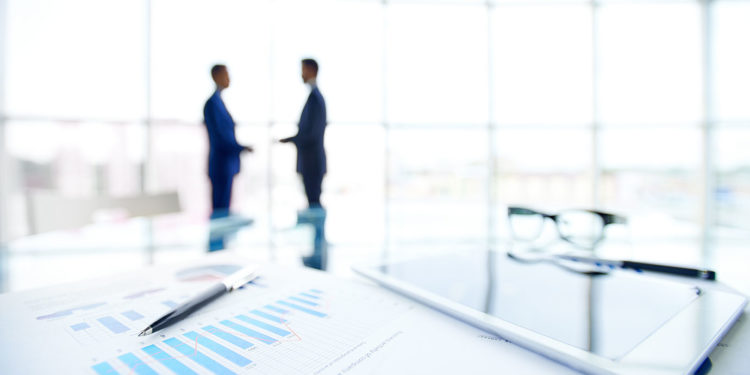The British entrepreneur Richard Branson has successfully flown to the edge of space and back in his Virgin Galactic passenger rocket plane, days ahead of a rival launch by Amazon founder Jeff Bezos, as the billionaires compete to kick off a new era of space tourism.
Seventeen years after Branson founded Virgin Galactic to develop commercial spacecraft and cater to future space tourists, the spaceplane went into sub-orbital flight on Sunday morning, reaching 55 miles (88km) above the Earth’s surface. The launch was slightly delayed until 10.40ET due to weather conditions at the Virgin Galactic’s operational base at Spaceport America in the New Mexico desert.
“Welcome to the dawn of a new space age,” Branson tweeted shortly after the flight, along with a picture of himself in zero gravity.
The long-awaited flight was the vehicle’s first fully crewed test flight to space and lasted 59 minutes from start to finish, with passengers experiencing several minutes of weightlessness.
“What a day…what a day, what a day, what a day,” he said after landing back on the tarmac to cheers. “I dreamt of this moment since I was a kid, but nothing can prepare you for the view from space.”
Branson is the first of the competing “billionaire space barons” who now officially qualifies as an astronaut in the US, and the flight partly served as a huge publicity stunt for Virgin Galactic.
Branson flew with pilots David Mackay and Michael Masucci, Beth Moses, the company’s chief astronaut instructor, Virgin Galactic’s lead operations engineer Colin Bennett and Sirisha Bandla, a research operations and government affairs vice-president. Before take off, he arrived at the spaceport on a bicycle and greeted his crewmates with hugs. “It’s a beautiful day to go to space,” he tweeted.
Carrier plane VMS EVE, named after Branson’s late mother, hauled the SpaceShipTwo VSS Unity to an altitude of about 50,000ft, and then released the VSS Unity rocket plane, which climbed up further into space.
During live footage, Branson and fellow astronauts were seen strapped into seats, wearing sunglasses as they grinned. The broadcast was hosted by comedian Stephen Colbert, former Canadian Space Agency astronaut Chris Hadfield, and future Virgin Galactic astronaut Kellie Gerardi, who will also fly up into space on a research flight in 2022.
A gathering of space industry executives, future customers and well-wishers witnessed the launch at Spaceport America, including fellow billionaire and space industry pioneer Elon Musk.
Earlier in the day, Branson tweeted a photo with Musk, saying “Big day ahead. Great to start the morning with a friend. Feeling good, feeling excited, feeling ready.”
Musk’s SpaceX, which will send its first all-civilian crew (without Musk), called Inspiration4 mission, into orbit in September, has a head start over Branson and Bezos, having already launched numerous flights to the International Space Station.
In nine days’ time, Bezos will launch his own rocket, New Shepard – named for Alan Shepard, the first American astronaut in space, which was manufactured by Bezos’s company Blue Origin.
Bezos posted a message on Instagram ahead of the flight wishing Branson “and the whole team a successful and safe flight”.
New Shepard will take Bezos and five others, including his brother, Mark, and pilot Wally Funk, who was denied the job of astronaut in the 1960s because she was a woman, roughly 62 miles above the Earth’s surface.
On Saturday, Blue Origin tweeted a message of good luck to Virgin Galactic, after mocking the company on Friday, when it alluded to whether Unity 22 was really going into space, instead of just to the edge of space.
The boundary between Earth’s atmosphere and outer space, known as the Kármán line, has been a source of controversy for years.
Aeronatics standard setter Fédération Aéronautique Internationale, the Switzerland-based world body, defines the Kármán line as the altitude of 100km (62 miles; 330,000 feet) above Earth’s mean sea level, as do several other organizations.
However, US space agency Nasa says the boundary is 50 miles, or 80 km, above sea level, with pilots, mission specialists and civilians who cross this boundary officially deemed astronauts.
Branson has sought to send a rocket into space since he founded Virgin Galactic in 2004 and aspires to create an “orbital hotel”.
Branson set a new record for the fastest boat crossing of the Atlantic ocean in 1986 and in 1987 made a record-breaking Atlantic crossing by hot-air balloon, both times having to be rescued from the sea.
An earlier prototype of the Virgin Galactic rocket plane crashed during a test flight over California’s Mojave desert in 2014, killing one pilot and seriously injuring another.
Interest in space tourism is rapidly catching on. Virgin Galactic says it has more than 600 reserved seats at $250,000 each for people who will fly in the future. The company plans to launch two additional flights before commercial service begins in 2022.
Read more:
Richard Branson flies to edge of space in Virgin Galactic passenger rocket plane
















